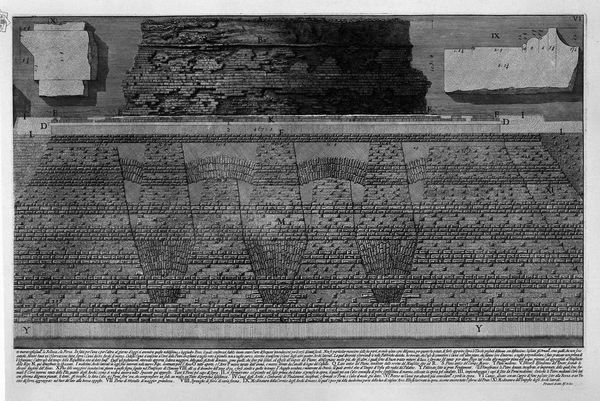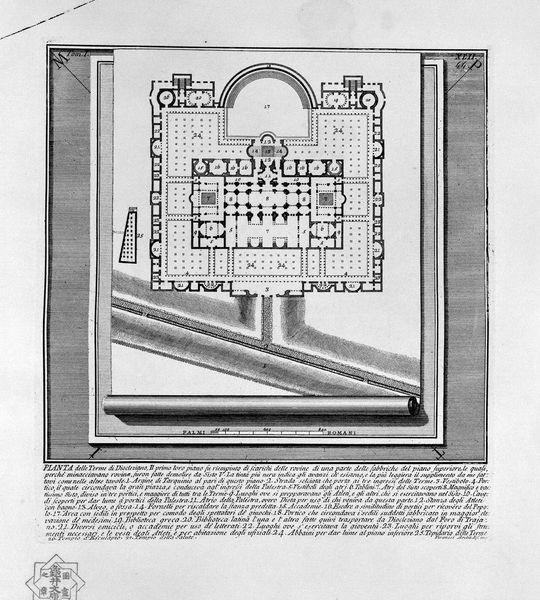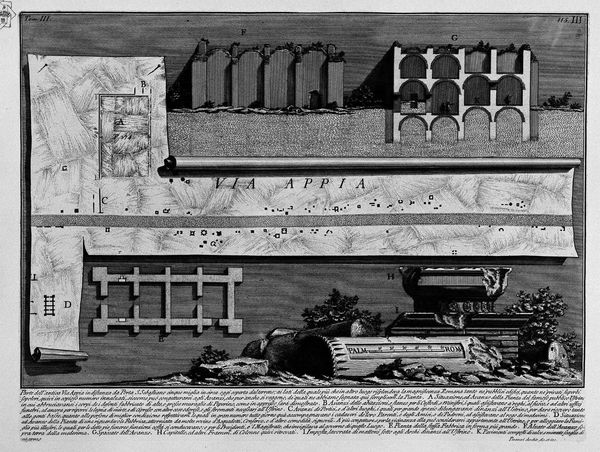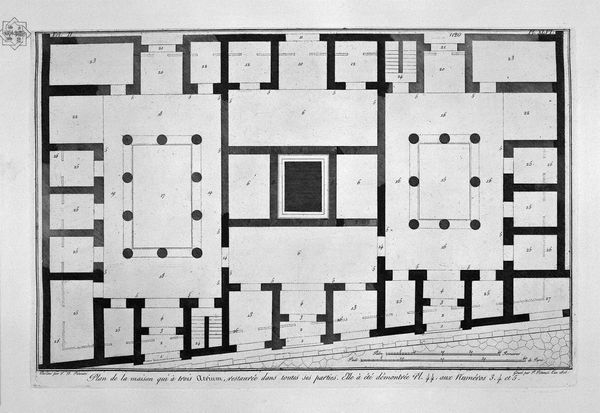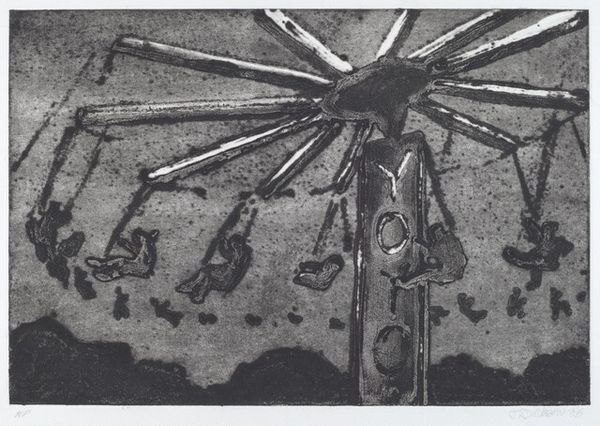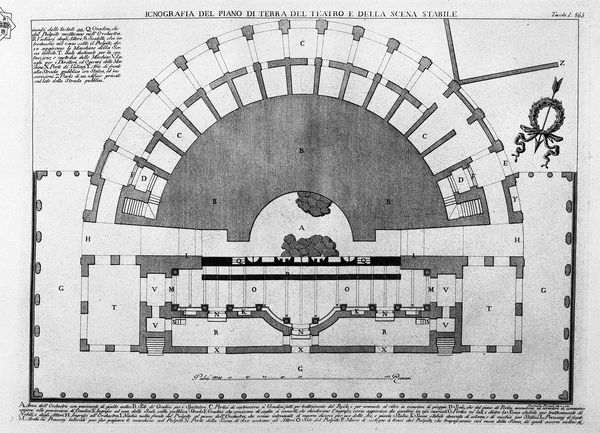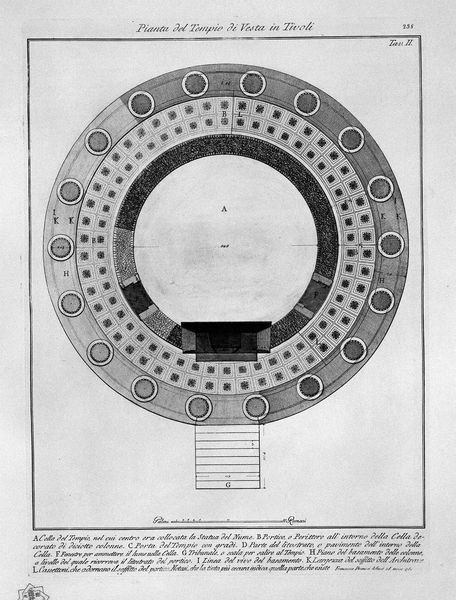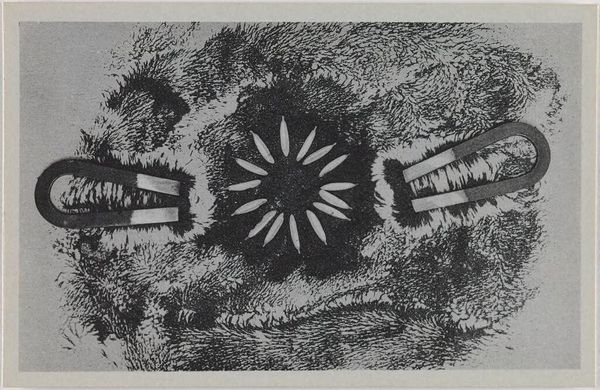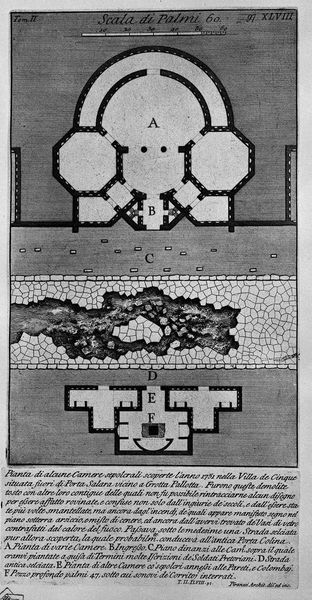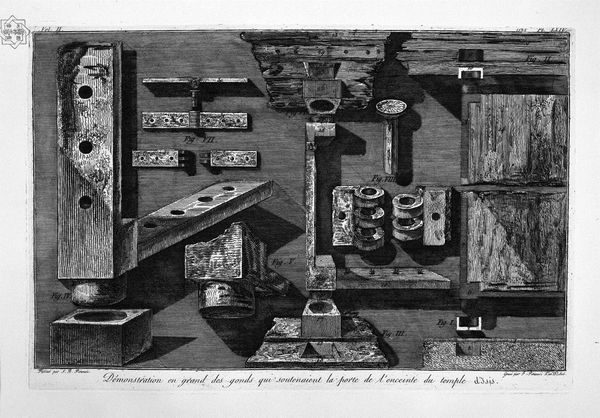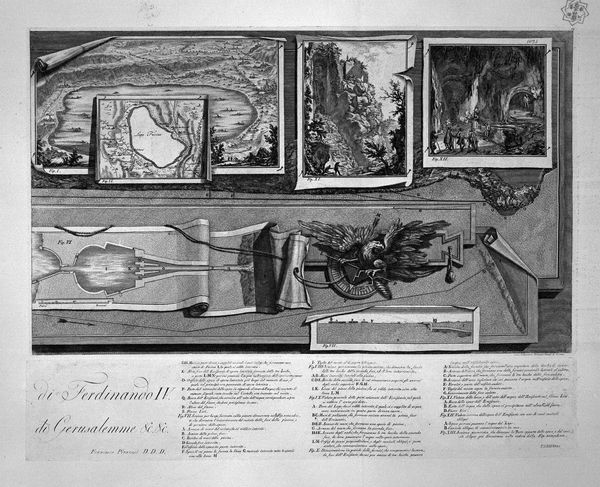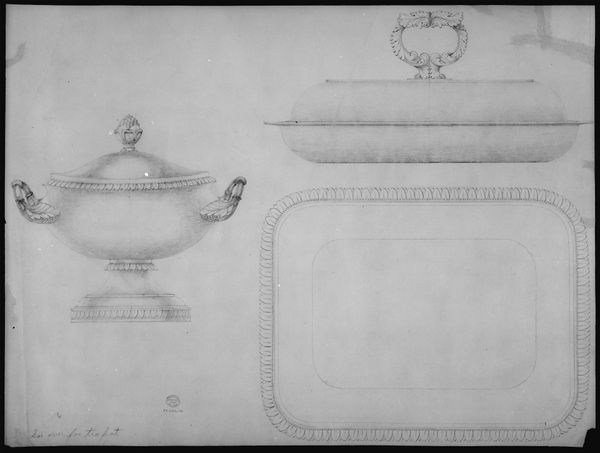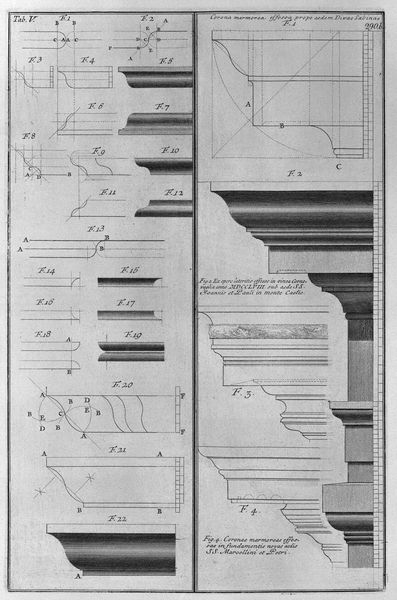
The Roman antiquities, t. 2, Plate XXI. Urn of marble found in the burial chamber above (figures carved from Barbault). 1756
0:00
0:00
drawing, print, engraving, architecture
#
drawing
# print
#
old engraving style
#
perspective
#
geometric
#
classicism
#
ancient-mediterranean
#
carved
#
history-painting
#
engraving
#
architecture
Copyright: Public domain
Curator: We're now looking at an engraving by Giovanni Battista Piranesi, dating back to 1756. The title is "The Roman antiquities, t. 2, Plate XXI. Urn of marble found in the burial chamber above." It presents a meticulously detailed plan view of what appears to be a mausoleum or complex of ancient Roman structures. Editor: My immediate impression is one of starkness and precision. The monochrome palette, combined with the rigid geometry, evokes a sense of solemn grandeur, like an architectural blueprint for a city of the dead. Curator: Indeed, Piranesi was renowned for his dramatic perspectives and detailed architectural studies. Observe how he uses line weight to define the different spaces. The crispness of the engraving emphasizes the monumentality of the unseen, vertical structures. Editor: What fascinates me is the apparent contradiction between the formal perfection depicted and the context of its discovery—a burial chamber. Tombs often tell tales of power, immortality, and cultural memory. Consider how the marble urn itself functions as a container not only for ashes, but also for inherited trauma or status. Who were these people, and how does this site solidify class and solidify difference between classes, in a real sense? Curator: Your reading rightly emphasizes the socio-political dimension. However, from a formal perspective, consider how the circular motifs interact with the linear pathways. There's a deliberate interplay of shapes that contributes to the composition's inherent balance and symmetry, it creates a dialogue. Editor: A dialogue constructed upon the suppression of the labor, class, and power it took to produce the image! The rigid form, rendered as "ancient" hides more contemporary implications of forced extraction from colonies for aesthetics like the object we see. I can't divorce it from its historical weight and complicity, however aestheticized it is in our mind or museum. Curator: A crucial reminder that formal elements are never entirely devoid of contextual implications. And that’s something worth holding in tension in viewing this. Editor: I’m left wondering about the untold stories beneath this meticulous surface. These images ask to bear witness to a legacy of appropriation—a complex inheritance that still speaks to us today.
Comments
No comments
Be the first to comment and join the conversation on the ultimate creative platform.
